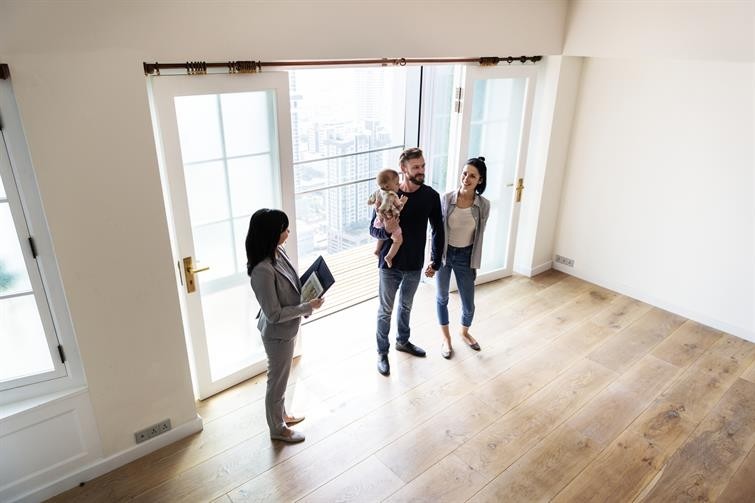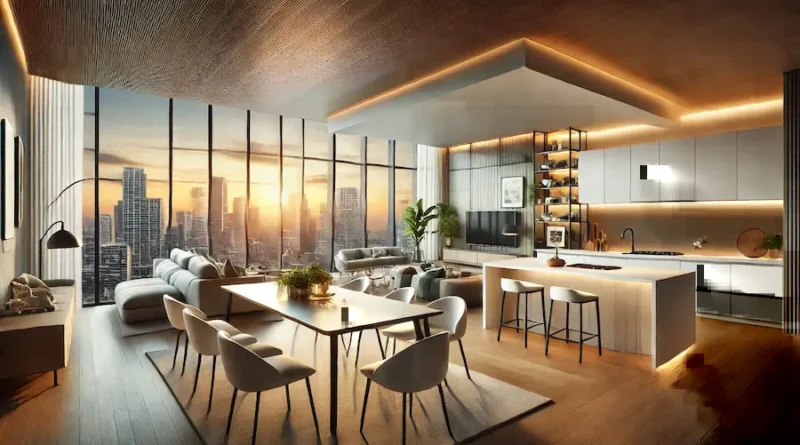Essential Tips for Finding the Perfect Apartment with Ease
Finding the perfect apartment can be a challenging task, but with the right approach, you can make it much easier. This guide will break down the process step-by-step, helping you find a place that fits your needs and feels like home. Whether you are moving out for the first time or looking for a new place to call home, these tips will ensure you make a well-informed decision. Let’s dive into the journey of apartment hunting with ease and confidence.
Understanding Your Apartment Needs and Budget

Identifying Your Needs
Before you start looking for an apartment, it’s important to figure out what you really need. Think about how many bedrooms you require. Do you need a big kitchen? How much storage space is necessary for you? It’s also a good idea to consider if you need any special features like a pet-friendly space, in-unit laundry, or a balcony.
When I was searching for my first apartment, I made a list of must-haves and nice-to-haves. For me, having a pet-friendly space was non-negotiable because of my dog, Max. This list helped me focus on what was truly important and saved me a lot of time.
Setting Your Budget
Next, you need to set a budget. Look at your monthly income and expenses to see how much you can realistically spend on rent. Don’t forget to include other costs like utilities, internet, and any additional fees.
Creating a clear budget will prevent you from falling in love with a place you can’t afford. When I moved into my current apartment, I made sure to account for every little expense. It was surprising how quickly things like electricity and internet added up.
Researching and Shortlisting Apartments
Online Research
Start your apartment hunt by going online. There are many websites, apps, and social media platforms where you can find apartment listings. These platforms allow you to filter your search based on your needs and budget. It’s also helpful to check local resources or apps popular in your area.
I personally love using apps like Zillow and Apartments.com. They make it so easy to see all the options available. Reading reviews from current or previous tenants is also a game-changer. It gives you an honest insight into the living conditions and management.
Making a Shortlist
Once you have a list of potential apartments, start shortlisting them. Focus on the ones that meet your basic criteria and are within your budget.
Categorizing them based on priorities like how close they are to your work, the amenities they offer, and their overall appeal will make it easier to decide which ones are worth visiting. During my last apartment hunt, I made an Excel sheet to keep track of everything. It sounds nerdy, but it was super helpful!
Visiting Potential Apartments

Scheduling Visits
Now it’s time to visit the apartments on your shortlist. Try to schedule your visits at different times of the day. This will help you understand the lighting, noise levels, and overall ambiance of the place.
Make sure to coordinate with landlords or property managers to ensure you have enough time for a thorough inspection. This way, you won’t feel rushed and can check everything properly.
Inspecting the Apartment
When you visit, look for any signs of damage, mold, pests, or other maintenance issues. Don’t be afraid to test appliances, faucets, electrical outlets, and heating/cooling systems to ensure they are in working order.
During one of my apartment visits, I discovered a major plumbing issue by simply turning on the shower. It’s these small checks that can save you a lot of hassle later on.
Assessing the Neighborhood
Exploring the Area
The neighborhood is just as important as the apartment itself. Walk around the area to get a sense of the community vibe and safety. Note the proximity to essential services like grocery stores, hospitals, schools, and public transportation.
I always recommend visiting the neighborhood both during the day and at night. It’s amazing how different a place can feel depending on the time of day.
Safety and Convenience
Research the crime rate and safety records of the area using resources like local police department websites or crime mapping services. You want to feel secure in your new home. Additionally, ensure the location offers convenient access to your workplace and other frequently visited places.
Living in a safe and convenient neighborhood can greatly improve your quality of life. Personally, I wouldn’t compromise on safety for anything.
Evaluating Amenities and Facilities

Building Amenities
Check what amenities the building offers. Does it have a gym, swimming pool, laundry facilities, parking, and security systems? Determine if these amenities are included in the rent or if there are additional charges.
Amenities can add a lot of value to your living experience. When I found an apartment with an on-site gym, it saved me time and money on a separate gym membership.
Utilities and Extra Costs
Confirm which utilities (water, electricity, gas, internet) are covered by the rent and which ones you’ll need to pay separately. Ask the landlord about the average utility costs to get a more accurate idea of monthly expenses. Additionally, inquire about any additional costs such as maintenance fees, pet fees, or parking fees.
Knowing all the costs upfront will help you avoid any surprises later on. One time, I moved into an apartment only to find out that water wasn’t included in the rent. Lesson learned!
Understanding the Lease Agreement
Reading the Lease Carefully
Before you sign anything, read the lease agreement thoroughly. Pay special attention to clauses regarding maintenance responsibilities, rent increases, and early termination fees.
Understanding the lease terms will help you avoid any future disputes and ensure you know your rights and responsibilities as a tenant. I always suggest having a friend or even a lawyer look over the lease if possible.
Negotiating Terms
If there are any terms you are uncomfortable with or need clarification on, don’t hesitate to discuss them with the landlord. You can also try to negotiate better conditions, such as reduced rent or additional amenities.
Negotiating can sometimes get you a better deal, so it’s worth a try. I once managed to get a lower rent by agreeing to a longer lease term.
Setting a Time Frame
Planning Your Move
Decide on a suitable move-in date and plan accordingly. Factor in the time needed for packing, hiring movers, and settling in.
Having a clear plan will make the moving process smoother and less stressful. When I planned my move, I created a timeline and checklist, which made everything go smoothly.
Informing Current Landlord
Give timely notice to your current landlord as per your lease agreement. Arrange for the handover of keys and final inspection of your current apartment.
Properly informing your current landlord ensures a smooth transition and helps you avoid any potential issues. This is one step that can sometimes be overlooked, but it’s crucial for a hassle-free move.
Also Read: rolism.com/restaurants-on-lake-hartwell
Making the Final Decision
Comparing Options
Now that you’ve done all the hard work of visiting and inspecting potential apartments, it’s time to make your final decision. Use the comparison table below to weigh the pros and cons of each apartment. Consider factors like rent, location, amenities, neighborhood, and overall comfort.
Comparison Table
| Criteria | Apartment 1 | Apartment 2 | Apartment 3 |
|---|---|---|---|
| Monthly Rent | $1000 | $1200 | $1100 |
| Distance to Work | 5 miles | 2 miles | 8 miles |
| Number of Bedrooms | 2 | 3 | 2 |
| Number of Bathrooms | 1 | 2 | 1.5 |
| Square Footage | 800 sq ft | 950 sq ft | 850 sq ft |
| Pet-Friendly | Yes | No | Yes |
| In-Unit Laundry | No | Yes | No |
| Balcony | Yes | No | Yes |
| Building Amenities | Gym, Pool | Parking, Gym | Laundry, Pool |
| Utility Costs Included | Water | Water, Gas | None |
| Additional Fees | $50 for parking | $100 for amenities | $75 for maintenance |
| Safety Rating | High | Medium | High |
| Nearby Facilities | Grocery store, School | Hospital, Shopping Mall | Park, Library |
| Public Transportation | Bus stop 0.5 miles away | Subway station 1 mile away | Bus stop 0.2 miles away |
| Noise Level | Low | Medium | Low |
| Lease Flexibility | 1-year lease, renewable | 6-month lease, renewable | 1-year lease, renewable |
| Landlord Responsiveness | High | Medium | High |
Trusting Your Instincts
After comparing all the options, trust your gut feeling. Sometimes, an apartment just feels right even if it’s hard to explain why. Maybe it’s the friendly landlord or the quiet neighborhood. If an apartment ticks all your boxes and feels like a place you can call home, that’s a good sign.
Remember, this is a place where you’ll spend a lot of your time, so it’s important to feel comfortable and happy there. I always go with my gut. If something doesn’t feel right, I move on.
Signing the Lease and Moving In
Finalizing the Lease
Before you sign the lease, make sure to read it one last time. Check for any details you might have missed. Ensure that everything you discussed with the landlord is included in the agreement, like any promised repairs or included utilities.
Look out for key clauses such as:
- Lease Duration: Make sure the lease term (e.g., one year) matches what you agreed on.
- Rent Payment Terms: Confirm the rent amount, due date, and payment method.
- Security Deposit: Check how much is required and the conditions for its return.
- Maintenance and Repairs: Understand who is responsible for what.
Once you’re satisfied, sign the lease and keep a copy for your records. This is important in case there are any disputes later. I keep all my important documents organized in a folder for easy access.
Moving In
Plan your moving day logistics. If you’re hiring movers, book them in advance. Make a checklist of everything you need to pack and label your boxes clearly. This will make unpacking much easier.
On moving day, take your time to settle in. Arrange your furniture, unpack your belongings, and make the space your own. This is your new home, so make it comfortable and personal.
Consider setting up essential services first, such as:
- Utilities: Ensure water, electricity, gas, and internet are set up.
- Security: Change locks if necessary and set up any security systems.
- Cleaning: Do a thorough cleaning to start fresh.
When I moved into my latest apartment, I spent the first day just cleaning and organizing. It made a huge difference and made the place feel like home right away.
Conclusion
Summary of Key Points
Finding the perfect apartment involves several steps. Start by understanding your needs and setting a budget. Research and shortlist potential apartments. Visit and inspect them thoroughly. Check the neighborhood for safety and convenience. Evaluate the amenities and facilities. Read and understand the lease agreement. Plan your move and inform your current landlord.
Final Thoughts
Take your time and trust the process. Finding the right apartment can take some effort, but it’s worth it in the end. A good home can make a big difference in your life, providing comfort, security, and happiness. So, be patient, do your research, and choose wisely.
Why am I writing this article? Because I’ve been through this process multiple times, and I know how overwhelming it can be. My goal is to make it easier for you by sharing my experiences and tips. I highly recommend taking the time to find a place that truly feels like home. It’s worth the effort, and you’ll thank yourself later.

